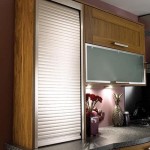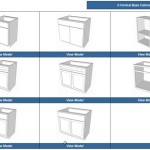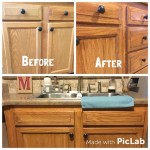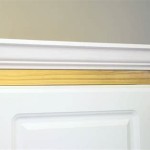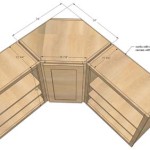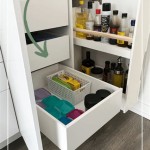Exploring the World of Model Kitchen Cabinets
Model kitchen cabinets represent a significant investment in any home. These pre-designed and often pre-assembled units offer a convenient and relatively predictable path to achieving a desired kitchen aesthetic and functionality. Understanding the diverse range of model kitchen cabinets available, their various construction methods, and the factors influencing their cost and performance is crucial for making an informed decision during a kitchen renovation or new construction project.
The term "model kitchen cabinets" encompasses a wide spectrum of options, ranging from budget-friendly, mass-produced units typically found in big box stores to semi-customizable lines offered by specialty cabinet retailers. These cabinets are "model" in the sense that they adhere to pre-determined dimensions, styles, and construction methods. While they offer less design flexibility than fully custom cabinetry, they significantly reduce the time and complexity associated with achieving a functional and aesthetically pleasing kitchen layout.
Before delving into the specific types and considerations, it is important to differentiate model kitchen cabinets from custom-built options. Custom cabinets are built to order, tailored to the exact specifications of the kitchen space and the preferences of the homeowner. This allows for maximum design flexibility and the ability to accommodate unusual dimensions or specific functional requirements. However, custom cabinetry is typically significantly more expensive and requires a longer lead time for design, fabrication, and installation. Model cabinets, on the other hand, offer a balance between cost, convenience, and a reasonable degree of customization within pre-defined parameters.
Key Point 1: Understanding Cabinet Construction and Materials
The construction and materials used in model kitchen cabinets directly influence their durability, aesthetics, and overall cost. A thorough understanding of these factors is essential for selecting cabinets that meet both budget and performance requirements.
Cabinet boxes, the structural foundation of the cabinets, are typically constructed from particleboard, medium-density fiberboard (MDF), or plywood. Particleboard is the most affordable option but is also the least durable and most susceptible to moisture damage. MDF offers a smoother surface for painting and is more resistant to warping than particleboard, making it a popular choice for painted cabinets. Plywood is the strongest and most durable option, offering excellent resistance to moisture and warping. However, it is also the most expensive of the three.
Cabinet doors and drawer fronts are available in a variety of materials, including solid wood, wood veneer, laminate, and thermofoil. Solid wood offers a classic and elegant look but can be prone to expansion and contraction with changes in humidity. Wood veneer consists of a thin layer of real wood adhered to a core material, offering the aesthetic of solid wood at a lower cost. Laminate is a synthetic material that is durable, easy to clean, and available in a wide range of colors and patterns. Thermofoil is a vinyl coating that is heat-sealed to a substrate, typically MDF. It is also durable and easy to clean but can be susceptible to damage from high heat.
Hardware, such as hinges, drawer slides, and knobs or pulls, also play a critical role in the functionality and durability of kitchen cabinets. High-quality hardware ensures smooth operation and long-lasting performance. Soft-close hinges and drawer slides are a popular upgrade that adds a touch of luxury and prevents slamming.
The choice of finish is another important consideration. Painted cabinets offer a wide range of color options and are relatively easy to touch up. Stained cabinets showcase the natural grain of the wood and provide a warm and inviting look. Glazed finishes add depth and dimension to the cabinets, while distressed finishes create a rustic or antique appearance.
Key Point 2: Exploring Different Styles and Configurations
Model kitchen cabinets are available in a diverse range of styles and configurations, allowing homeowners to create a kitchen that reflects their personal taste and meets their functional needs. Understanding the different options available is essential for selecting the right cabinets for a specific kitchen space.
Traditional style cabinets typically feature raised panel doors, ornate detailing, and a warm, inviting color palette. Shaker style cabinets are characterized by their simple, clean lines and recessed panel doors. They are a versatile choice that can complement a wide range of kitchen styles. Modern style cabinets often feature slab doors, minimalist hardware, and a sleek, contemporary aesthetic. Contemporary style cabinets may incorporate elements of both modern and traditional styles, creating a unique and personalized look.
Base cabinets are the foundation of any kitchen layout. They are typically 34.5 inches tall and come in a variety of widths and depths. Base cabinets can be configured with drawers, doors, or a combination of both. Wall cabinets are mounted on the wall and are typically 30 or 36 inches tall. They are used for storing dishes, glasses, and other kitchen essentials. Tall cabinets, also known as pantry cabinets, are typically 84 or 96 inches tall and are used for storing food, appliances, and other bulky items.
Specialty cabinets, such as corner cabinets, appliance garages, and wine racks, can be added to a kitchen layout to maximize storage space and functionality. Corner cabinets are designed to fit into the corners of the kitchen and can be configured with lazy susans or pull-out shelves. Appliance garages are used to conceal small appliances, such as toasters and blenders. Wine racks are designed to store wine bottles and can be incorporated into base cabinets, wall cabinets, or tall cabinets.
The kitchen layout significantly impacts the choice and configuration of model cabinets. L-shaped, U-shaped, and galley kitchens each present unique challenges and opportunities for cabinet placement. Island kitchens often incorporate additional base cabinets and specialty cabinets to create a focal point and provide additional storage and workspace. A well-planned kitchen layout maximizes efficiency and functionality, making the kitchen a more enjoyable space to work in.
Key Point 3: Factors Influencing Cost and Installation of Model Cabinets
The final cost of model kitchen cabinets is influenced by a variety of factors, including the materials used, the style and configuration of the cabinets, and the complexity of the installation. Understanding these factors is crucial for budgeting for a kitchen renovation project and avoiding unexpected costs.
The type of cabinet box construction and door material significantly impacts the cost. Plywood cabinet boxes and solid wood doors are generally more expensive than particleboard cabinet boxes and laminate doors. The style of the cabinets also influences the cost. Ornate detailing and intricate designs require more labor and materials, resulting in a higher price.
The size of the kitchen and the number of cabinets required also play a significant role in the overall cost. Larger kitchens require more cabinets, resulting in a higher price. Specialty cabinets, such as corner cabinets and appliance garages, also add to the cost. The configuration of the cabinets, such as the number of drawers versus doors, can also influence the price.
Installation costs can vary widely depending on the complexity of the project. Simple installations, such as replacing existing cabinets with new cabinets of the same size and configuration, are typically less expensive than complex installations, such as reconfiguring the kitchen layout or installing new plumbing and electrical wiring. Hiring a professional installer ensures that the cabinets are properly installed and that all building codes are met.
The choice between ready-to-assemble (RTA) cabinets and pre-assembled cabinets also impacts the cost. RTA cabinets are shipped flat-packed and require assembly by the homeowner or a hired professional. They are typically less expensive than pre-assembled cabinets but require more time and effort to install. Pre-assembled cabinets are shipped fully assembled and ready to install. They are more expensive than RTA cabinets but offer a more convenient and time-saving option.
Ultimately, careful planning and budgeting are essential for a successful kitchen renovation project involving model kitchen cabinets. Obtaining multiple quotes from different suppliers and installers allows for a thorough comparison of prices and services. Considering all factors influencing cost enables homeowners to make informed decisions and achieve a desired kitchen aesthetic within a predetermined budget.

What Are The Most Useful Kitchen Cabinet Models Era Whole Vanities

How We Measure For Kitchen Cabinets Model Remodel

Modern Kitchen Cabinets Leonia Nj Modiani Kitchens

Kitchen Cabinet Colors For The Modern Homeowner Model Remodel

New Model Kitchen Cabinet Design China Cupboard Furniture Home Made In Com

Modern U Shaped Kitchen Design With Suede Cabinets Livspace

Popular Cabinet Door Styles Trends In 2024 Model Remodel

Beautiful Kitchen Models Cupboard Designs Model Design
Top Kitchen Cabinet Trends

2024 New Model Ready Made Kitchen Cabinets Designs For Project China Luxury Cabinet Built Cupboards In Com
Related Posts

